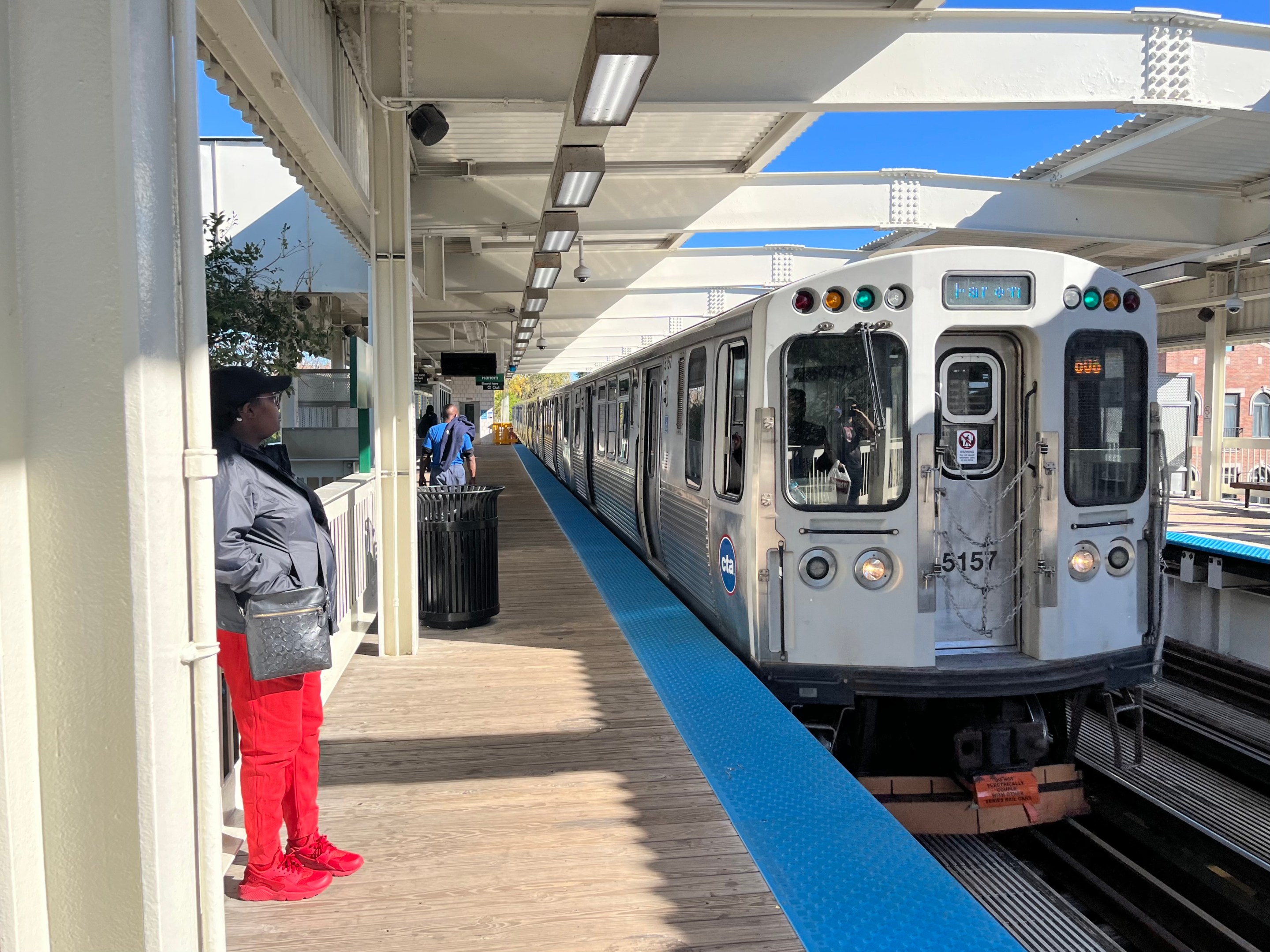
Two themes dominated yesterday's public hearing on the CTA's proposed 2025 budget, held at the transit agency's headquarters at 567 W, Lake St. in the West Loop.
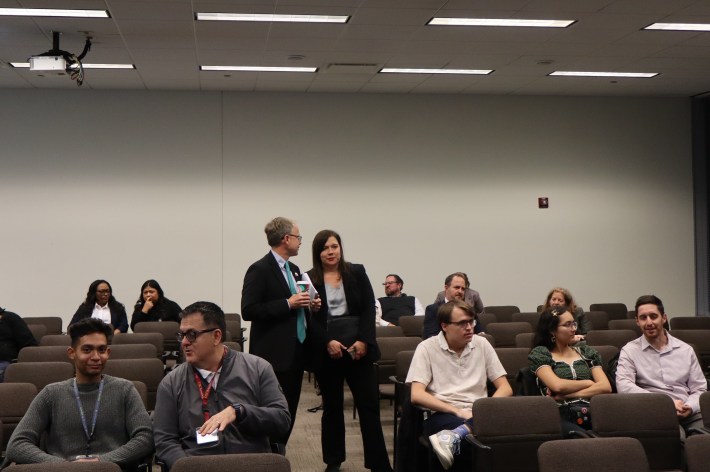
First, attendees objected to the proposal including more spending on private security guards. The majority of people who gave public comments argued the money would be better spent on unarmed transit ambassadors and supportive services for people sheltering in train cars.
The other oft-mentioned issue was service levels. The agency boasted in a news release lasr Monday that "CTA returns to pre-pandemic rail service levels with new fall schedule." However, the grassroots transit advocacy organization Commuters Take Action (CTAction) said its data analysis found that last Sunday only 81 percent of scheduled runs materialized, so the claim of restored service simply isn't true yet.
CTA President Dorval Carter and most members of the Chicago Transit Board attended the hearing, either in person or virtually, but they didn’t speak. The directors will vote on whether to approve the budget during the November 13 board meeting. The board of the Regional Transportation Authority, which oversees the three local transit systems must sign off on the CTA budget in December, but that step is usually just a rubber stamp.
Public safety on the 'L'
The CTA's crime rate spiked during the COVID-19 pandemic, and in recent years the transit agency has been increasingly reliant on private security firms. Last October, when the board was asked to approve funding for the request for proposals for a new contract for security guards, several board members questioned how effective that approach is. Director Roberto Requejo suggested working with community organizations to hire transit ambassadors and crisis intervention teams as an alternative to more guards.
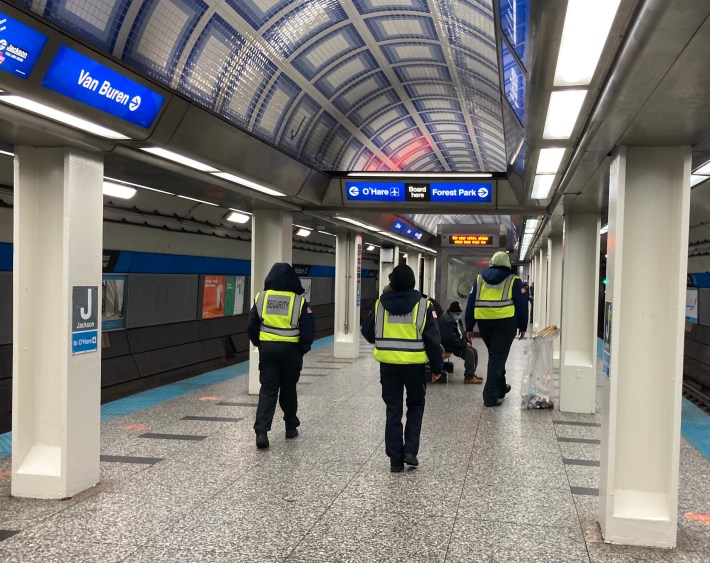
Since 2022, the CTA has worked with Thresholds, Haymarket Center, and the Night Ministry nonprofits to provide supportive services on the Blue and Red lines. That contract is worth around $2 million.
The proposed 2025 budget calls for the CTA to spend over $88.47 million on private security. That's an increase compared to the $65.15 million that was budgeted for 2024. But the 2025 number is in line with the $86.9 million the agency is actually projected to spend before the end of this year.
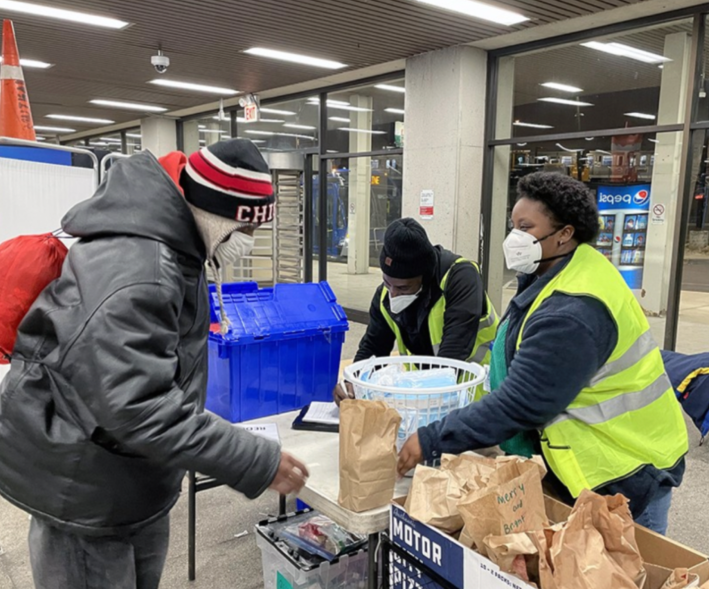
Olivia Gahan, an organizer with CTAction, said the new budget should include more investment in providing supportive services. While, unlike the security guards, that strategy seems to be effective, it currently only gets a small fraction of the funding. "That is what safety looks like," she said. "So why not expand this budget item?"
Kyle Lucas, executive director of the advocacy group Better Streets Chicago, was among several speakers who argued that the current private security and K-9 guard dog units are ineffective. "You can ask just about any rider in the community, and they don’t feel like it makes them any safer," he said.
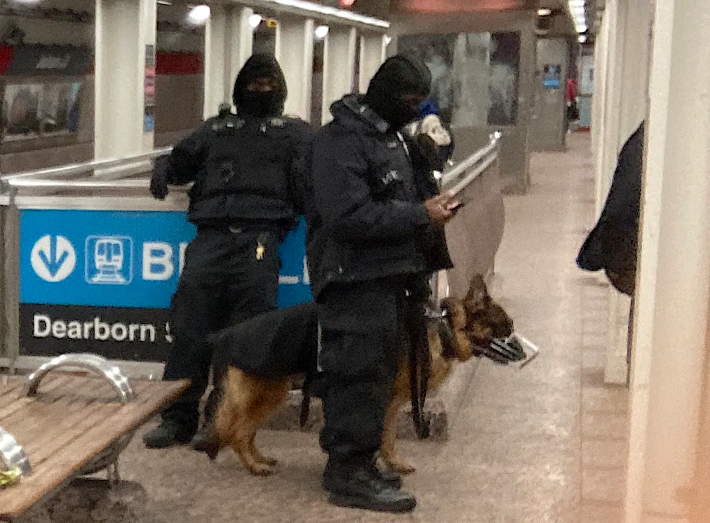
Lucas said he once witnessed a group of boys trying to retrieve a hat from the tracks at one of the Brown Line stations, while a security guard on the opposite platform simply looked at their phone. Lucas alerted a Customer Assistant at their booth, and that person got the situation resolved.
"We really want the CTA to really invest in actual innovative solutions to create safety," Lucas said. He said that would include "holistic solutions" such as transit ambassadors.
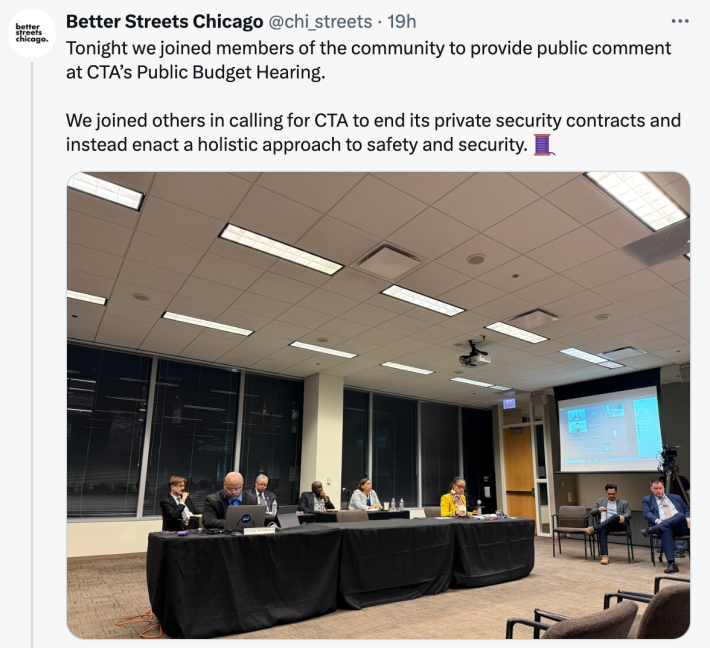
Metropolitan Planning Council transportation director Audrey Wennink noted that transit ambassadors would be unarmed, but would have walkie-talkies that would let them call for police help, if necessary. Given the "real and perceived safety issues have contributed to ridership not recovering," she said, the impending $730 million regional fiscal cliff, and "the increasing urgency of attracting riders back to transit, we feel that now is the time."
Commenter Dianne Kampinen was the only attendee who spoke in favor of increasing security. "Everybody is talking about the ambassador thing or whatever, that to me is too gentle," she said. "The people who do [things like smoking on the train or jumping turnstiles], they're very brazen.”
'L' service matters
Transit advocate and environmental policy analyst Nik Hunder was among several commenters who argued that this week's CTA press release about scheduling rail service like it's 2019, was way too rose-colored. "Even today, you’re delivering 82 percent of that [scheduled] service," he said.
CTAction's Fabio Göttlicher went into more detail. "Despite it only being four days [after the new schedule launched], it is more than evident that the CTA is not able to reliably deliver these service levels," he said. "Since Sunday, only the Yellow Line has delivered more than 90 percent of its scheduled service every day. Other lines have big variance, with most service delivery percentages falling somewhere in the 80 percent range."
Göttlicher added that he understands that hiring enough train operators has been a struggle – but he wants CTA to be honest about that. "Just tell us that you only have manpower to run 85 percent of the pre-pandemic schedules," he said. "Let’s all collectively work on getting that percentage to 100 percent and beyond. Or perhaps [embattled CTA President Dorval Carter Jr.] takes inspiration from the empty politicians of today, where a lie is accepted as long as it’s repeated often enough.”

Other issues
In his comments, Hunder touched on a few other issues. He complained about bus bunching. He said the CTA’s much-hyped chatbot, which launched in April and has been regularly touted at board meetings, worked well at first, but by May the AI-powered communication tool was slow to respond to questions.
And Hunder added that, while he isn’t entirely sold on the Illinois General Assembly proposal to consolidate the region's four transit agencies into one, he's disappointed that the CTA rejected the idea out of hand. "CTA’s approach is we're [just] going to keep asking for money," he said. "It’s really disappointing to see that."
Bruce Mainzer, co-chair of the Chicagoland chapter of the Climate Reality Project, argued the CTA should speed up its switch to the battery-powered electric buses. He noted that the renovation of the 103rd Street bus garage on the Far South Side to accommodate electric buses is running behind schedule, and conversion of other garages isn’t even in the agency's five-year capital plan.
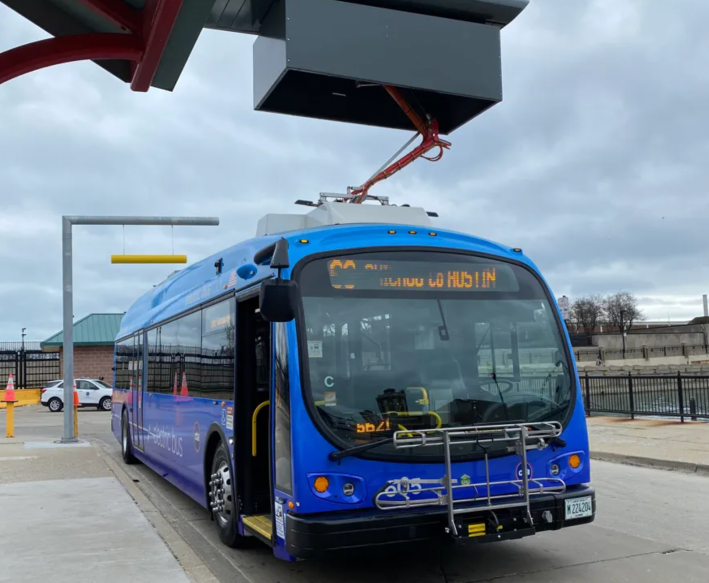
"We have serious doubts that CTA will make serious progress to [buy and store] enough electric buses to make a meaningful reduction in the carbon footprint and ensure Chicago has a fully electric bus [fleet] by 2024," Maizer said.
But Lakeview resident Joseph Miscimarra, who said uses public transit to help fight climate change, echoed an argument that Streetsblog Chicago Editor John Greenfield has made many times. Even diesel-powered buses are an effective strategy for fighting climate change – if the service is reliable enough to persuade people to take transit instead of driving.
"How do we get people to switch from cars to buses?" Miscimarra said. "You offer them more frequent, fast service."
Yes, while electric bus fleets are good, an equally effective, but less expensive, way to combat global warming is installing car-free, bus-only lanes with camera enforcement. But that's a heavier political lift. - Ed

Did you appreciate this post? Please consider making a tax-deductible donation, to help keep Streetsblog Chicago's sustainable transportation news and advocacy articles paywall-free.
